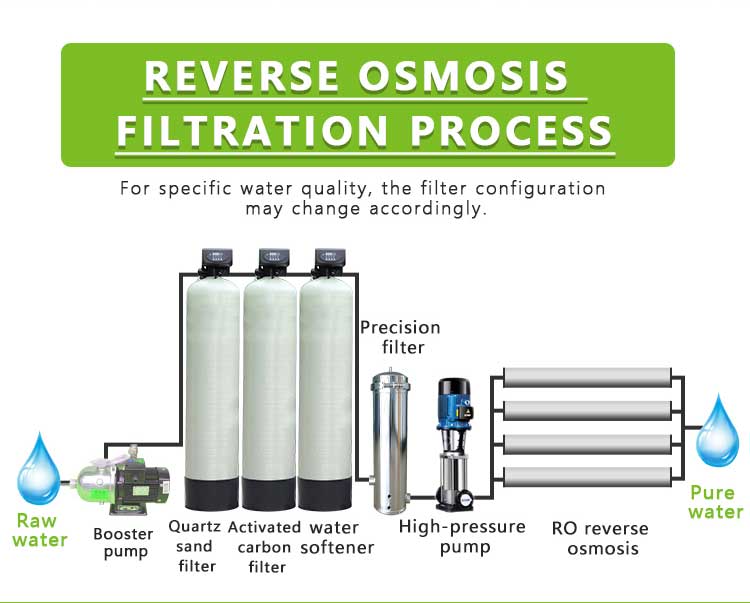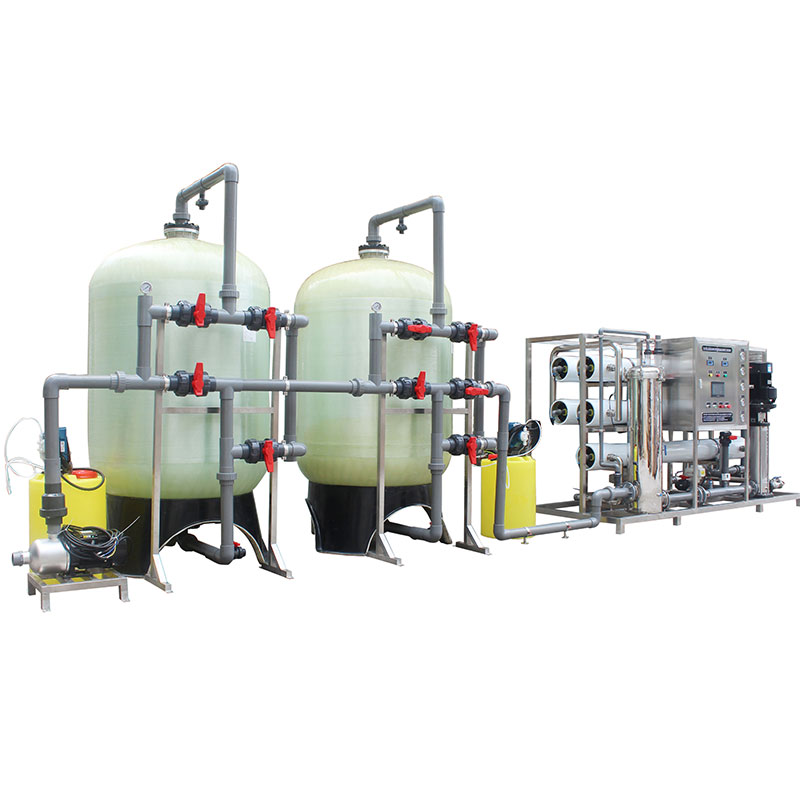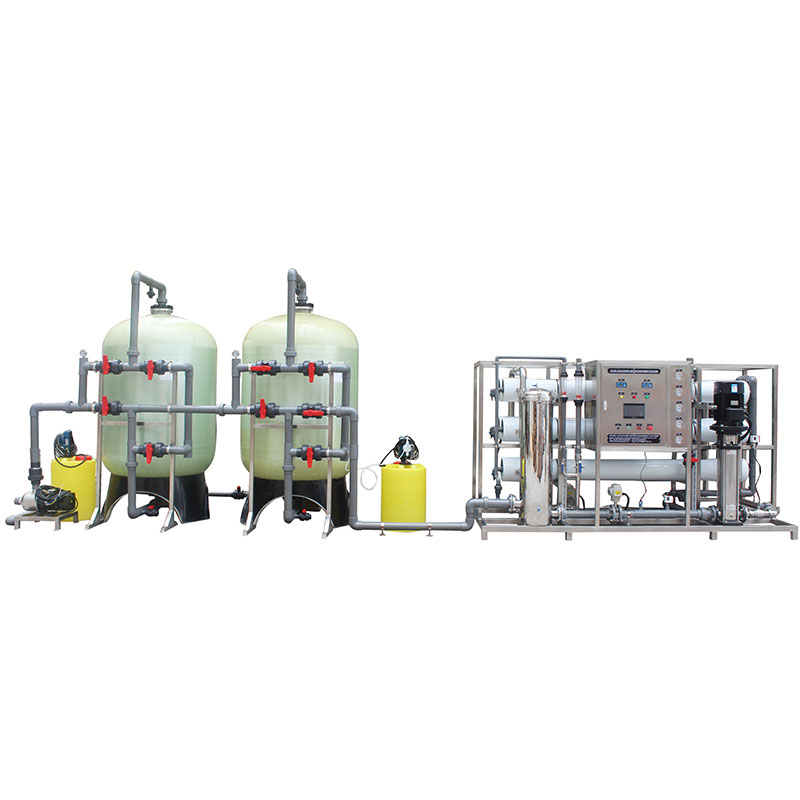What equipment is needed for water treatment?
Whether it is urban water supply system, industrial wastewater treatment or rural drinking water purification, water treatment equipment is an indispensable key link. So, what equipment is needed for water treatment? How do these equipment work together?
This article will introduce the common equipment and its functions in the water treatment process in detail.

Basic process of water treatment
Before understanding the specific equipment, it is necessary to briefly introduce the basic process of water treatment. Water treatment is generally divided into four main stages: pretreatment, primary treatment, secondary treatment and tertiary treatment. Each stage has its specific goals and methods, and different treatment methods require corresponding equipment to achieve.
1. Pretreatment
The purpose of pretreatment is to remove large particles and suspended matter in the water to protect subsequent treatment equipment and improve the treatment effect.
2. Primary treatment
Primary treatment mainly removes suspended solids and some organic matter in water by physical and chemical means.
3. Secondary treatment
Secondary treatment mainly removes dissolved organic matter and fine suspended matter through biological treatment and physical and chemical treatment.
4. Tertiary treatment
Tertiary treatment is a deep treatment stage, which mainly removes specific pollutants in the water, such as nitrogen, phosphorus, heavy metals and micro-pollutants, and performs disinfection.
Equipment required for water treatment
1. Pretreatment equipment
1.1 Screens and screens
● Function: Remove large particles and floating objects in the water, such as leaves, plastic bags and garbage.
● Equipment: coarse screens, fine screens, drum screens, etc.
1.2 Grit chamber
Function: Remove inorganic particles such as sand and gravel from the water by gravity sedimentation.
Equipment: horizontal grit chamber, vertical grit chamber and cyclone grit chamber.
1.3 Pre-oxidation equipment
● Function: Preliminary oxidation of organic matter and metal ions by adding oxidants, controlling odor and preventing the growth of microorganisms.
● Equipment: chlorine dosing device, ozone generator, etc.

2. Primary treatment equipment
2.1 Coagulation equipment
● Function: By adding coagulants, fine suspended matter is condensed into larger flocculent particles.
● Equipment: Coagulation tank, mechanical agitator, dosing device, etc.
2.2 Flocculation equipment
● Function: Further aggregate the flocculent particles formed by coagulation for easy sedimentation.
● Equipment: Flocculation tank, flocculation agitator, etc.
2.3 Sedimentation equipment
● Function: Separate the flocculent particles from the water by gravity sedimentation, forming sludge that is deposited at the bottom of the sedimentation tank.
● Equipment: Sedimentation tank, inclined tube sedimentator, etc.
3. Secondary treatment equipment
3.1 Biological treatment equipment
● Function: Remove organic pollutants from water through microbial metabolism.
● Equipment: Activated sludge system, trickling bed, biological filter, sequencing batch reactor (SBR), etc.
3.2 Filtration equipment
● Function: Remove suspended matter and microorganisms from water through physical filtration.
● Equipment: sand filter, carbon filter, membrane filter (ultrafiltration, microfiltration), etc.
4. Tertiary treatment equipment
4.1 Advanced oxidation equipment
● Function: Further decompose refractory organic matter and micropollutants through strong oxidation means.
● Equipment: ozone generator, ultraviolet disinfector, hydrogen peroxide dosing device, etc.
4.2 Denitrification and phosphorus removal equipment
● Function: Remove nitrogen and phosphorus compounds from water through chemical precipitation or biological treatment.
● Equipment: biological denitrification tank, chemical precipitation tank, membrane bioreactor (MBR), etc.
4.3 Disinfection equipment
● Function: Kill pathogenic microorganisms in water through physical or chemical methods to ensure water quality safety.
● Equipment: chlorine dosing device, chlorine dioxide generator, ultraviolet disinfector, etc.

Modern water treatment technology and equipment
With the development of science and technology, water treatment technology is constantly innovating, and some modern water treatment equipment plays an important role in improving treatment efficiency and water quality.
1. Reverse Osmosis (RO) System
● Function: Remove dissolved salts, heavy metals, organic matter and microorganisms from water through semi-permeable membranes.
● Equipment: High-pressure pumps, RO membrane components, pretreatment devices (such as activated carbon filters, ultrafilters), etc.
● Applications: Seawater desalination, high-purity water preparation, drinking water purification, etc.
2. Ultrafiltration (UF) and Nanofiltration (NF) Systems
● Function: Filter suspended solids, colloids, bacteria and some soluble organic matter in water through membranes of different pore sizes.
● Equipment: UF membrane components, NF membrane components, high-pressure pumps, pretreatment devices, etc.
● Applications: Drinking water treatment, industrial water treatment, wastewater reuse, etc.
3. Membrane Bioreactor (MBR)
● Function: Combine the advantages of biological treatment and membrane filtration to improve effluent water quality and treatment efficiency.
● Equipment: Bioreactor, ultrafiltration membrane components, blowers, etc.
● Applications: Small and medium-sized water treatment plants, recycled water projects, industrial wastewater treatment, etc.
4. Electrochemical water treatment equipment
● Function: Remove pollutants from water through electrochemical reactions, such as electrocoagulation, electrooxidation and electrosorption.
● Equipment: Electrodes, electrolyzers, DC power supplies, etc.
● Applications: Treatment of high-concentration organic wastewater, treatment of wastewater containing heavy metals, etc.
Conclusion
Water treatment plants play an irreplaceable role in purifying water resources and ensuring the safety of drinking water. By using various advanced water treatment equipment, water treatment plants can purify water from various sources into safe and clean fresh water.




